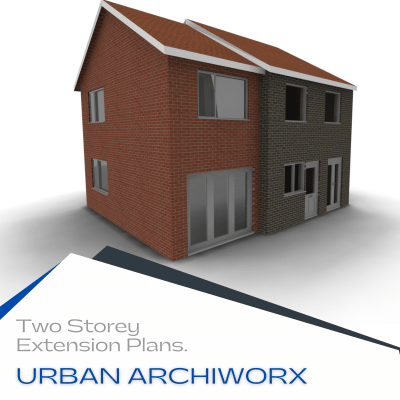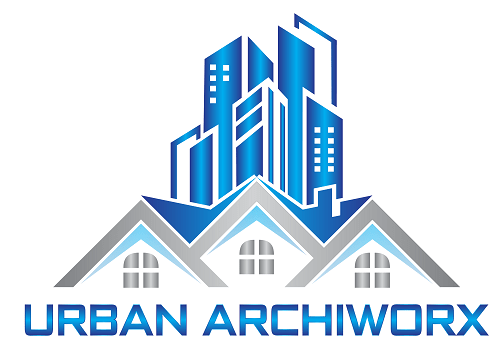Multi Storey Extension Plans
You are here: Home | Services | Planning Drawings | House Extension | Multi Storey Extension Plans
Plan your multi storey extension
Initially, it’s essential to determine your objectives for the multi storey extension. Are you aiming to expand living space for your family or enhance the value of your property? Once you’ve clarified your goal, you can proceed with designing the extension. Take into account the architectural style of your current home, the available space in your garden, and the practicality of the extension. Engaging a skilled architect or designer can assist in crafting a design that aligns with your requirements while remaining within your financial means.

Multi-storey extensions offer versatile layouts to maximize living space and functionality. Here are some common types:
Side-by-Side Layout:
- The additional floors are built directly on top of the existing structure, creating a straightforward extension of the floor plan vertically.
- This layout maximizes the footprint of each floor while maintaining a consistent layout and room arrangement.
Stacked Layout:
- Each additional floor is stacked directly on top of the other, resulting in a compact and efficient layout.
- This layout is ideal for narrow or compact properties where space is limited horizontally but can be expanded vertically.
Lateral Extension:
- The extension extends horizontally from the side of the existing structure, adding extra rooms or living space on each floor.
- This layout allows for a more spread-out design, with rooms arranged side by side rather than stacked vertically.
Wraparound Layout:
- The extension wraps around one or more sides of the existing structure, creating additional rooms or living space on multiple levels.
- This layout maximizes natural light and views by incorporating windows on multiple sides of the extension.
Integrated Layout:
- This layout maintains the overall aesthetic of the property while providing extra space for living, sleeping, or recreational purposes.
- The extension is seamlessly integrated into the existing structure, with the additional floors blending seamlessly with the original architecture.
Offset Layout:
- The extension is offset from the existing structure, creating a staggered or asymmetrical layout.
- This layout can add visual interest to the property and allows for more creative room arrangements and design elements.
Central Core Layout:
- The extension is built around a central core, such as a staircase or elevator shaft, with rooms arranged around it on each floor.
- This layout maximizes efficiency by consolidating utility connections and circulation space in a central location.
Custom Layout:
- A bespoke layout tailored to the specific needs and preferences of the homeowner, incorporating unique features, room arrangements, and design elements.
- This layout offers maximum flexibility and customization options to create a truly one-of-a-kind living space.
Planning Permission for Multi Storey Extension
Next, you’ll need to obtain planning permission for your multi storey house extension. This you need to apply for planning permission from your local council. Having your architectural designer assist you in this process can ensure that your plans comply with local regulations.
Building Regulations for Multi Storey Extension
Once you have planning permission, you’ll need to obtain building regulations for your multi storey extension. This ensures that your extension meets the minimum standards for safety, health, and energy efficiency. Your architectural designer can help you with this process and ensure that your plans meet all building regulations.
Our process
Consultation
Start by consulting with one of our team to discuss your project requirements, objectives, and any constraints or regulations that may apply. Then a site survey will be conducted
Design
A conceptional design will be drafted. Where one our architectural designers will design a detailed planning drawings, that will include site plans, sections & floor plans.
Submission
Prepare and submit your planning application, including the planning permission drawings, to the relevant local planning authority. Be sure to include any required forms, fees, and supporting documents as specified by the authority.
Build
If your planning application is approved, you will receive planning permission to proceed with your proposed development. You can then use the approved planning permission drawings to obtain building regulations approval and begin construction
How much are plans for a multi storey extension?
Planning Package
Drawing Plans Only-
Site measurement up
-
Planning approval drawings
-
Submitting the relevant application
-
Site Plan 1:200 or 1:500
-
Location Plan 1:1250 or 1:2500 scale
Planning & Technical Package
Drawings Plans & Building Regulations-
As Planning Package
-
Construction Details
-
Working Drawings
-
Building Regulations
-
Liase with other Consultants
Building Regulations
Building Regs Only-
Building Specification
-
Sectional Drawings
-
Detailed Drawings
-
Call Outs
